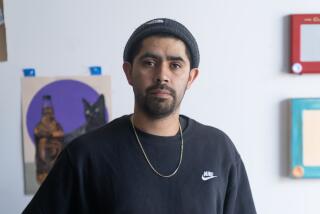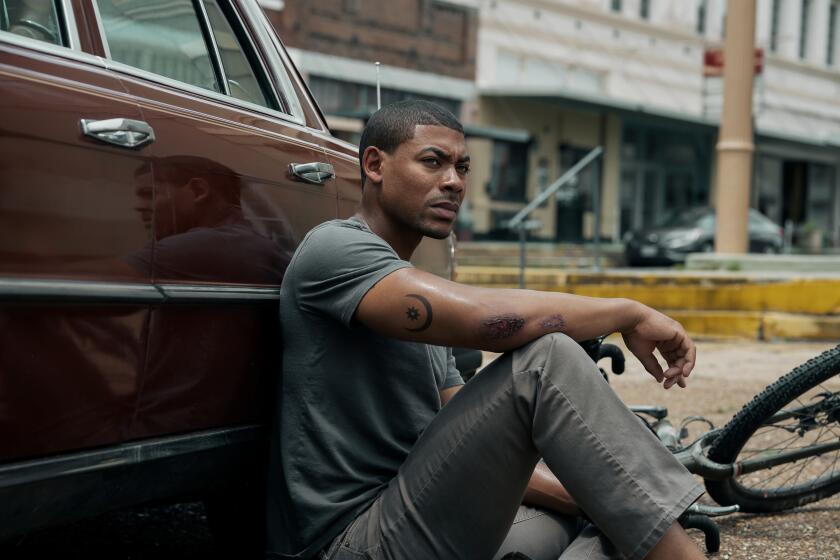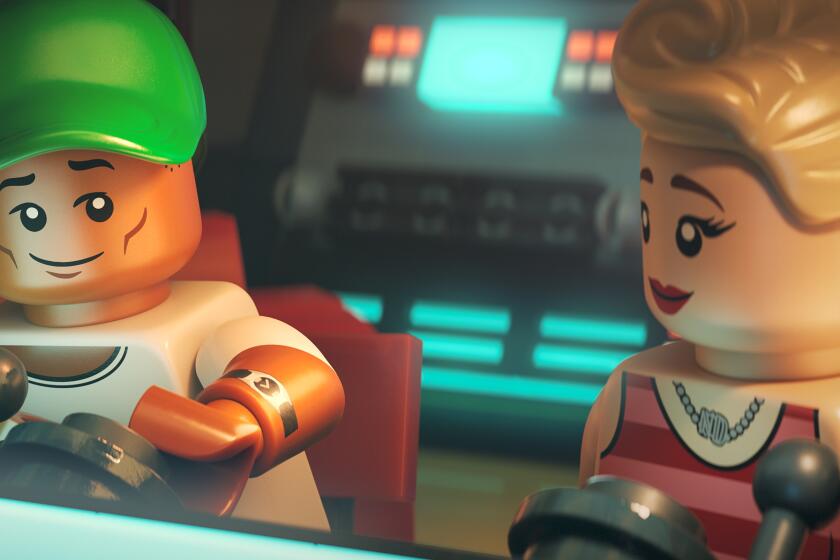How do you solve a problem like Gauguin?
Every year, it seems, there’s another movie about Vincent van Gogh. But what about his post-Impressionist pal Paul Gauguin? He might be the less-celebrated artist, but Gauguin’s story has everything — sex, intrigue, passion. A vaguely villainous beard. And you end up in Tahiti. What’s not to like?
If you know anything about Gauguin, you know that’s a loaded question.
Since his 1903 death in what was then French Polynesia, Gauguin has represented the artist as anti-hero, the man who sacrificed everything for his art — even if the ones doing much of the sacrificing were the wife and five kids he left in Paris.
He’s also developed a modest filmography: Anthony Quinn played him in “Lust for Life” (1956), which was really about Van Gogh. Wladimir Yordanoff played him in Robert Altman’s “Vincent & Theo” (1990), which was really about van Gogh. In “Painted With Words” (2010), Aidan McArdle played him opposite Benedict Cumberbatch as you-know-who. George Sanders played him in “The Moon and Sixpence” (1942), though he wasn’t called Paul Gauguin. And he’s been portrayed by two Sutherlands (Donald and Kiefer) in two different movies.
Arriving this week is “Gauguin: Voyage to Tahiti,” director Edouard Deluc’s lushly photographed, on-location film about the painter’s South Seas period, featuring the French actor Vincent Cassel as a grizzled, ailing Gauguin, an artistically driven interpreter of Tahiti and lover of its people. And not one entirely unaware of the conflicted nature of that love.
“Gauguin presents all kinds of problems in the #metoo era,” said David D’Arcy, a New York-based arts writer. “What he was doing with young women we assume was criminal. But even if he were shipping his paintings back to his dealer in Paris, he’d be breaking the law today.”
Many of the paintings were nudes; the models were certainly underage. If there were ever an artist whose work was poised to be re-filtered through the prism of contemporary morality, it’s Paul Gauguin.
“The art is good, it’s innovative and it’s held up,” said Elizabeth Childs, professor of art history and archaeology at Washington University in St. Louis, and an authority on Gauguin and Van Gogh. “It was marketed well, and it’s amazing that a lot of it survived. It might have perished in an un-airconditioned hut in Polynesia.”

In this exclusive clip from the film, which centers on the post-Impressionist’s surprising move to Tahiti, Gauguin, played by Cassel, discusses how his new home has changed his outlook on life, and reveals the “spirited” inspiration behind his lates
And yet there’s no getting around the fact that Gauguin not only painted but was sexually involved with young Tahitian women — principally Teha’amana, whom Gauguin wrote of as Tehura and is played by Tahitian actress Tuhei Adams (who looks like she could have modeled for Gauguin herself).
In the film, there are some accommodations made to current views on colonialism and patriarchy: Tehura is more or less offered up to a hesitant Gauguin by her parents; Tehura is a mature young woman, not the 13- or 14-year-old the actual Teha’amana was when she first met Gauguin. She becomes his “native wife” but always has the option of leaving him. And her attraction to another Tahitian, the younger man Josepha (Pua-Tai Hikutini), causes Gauguin to reassess his involvement with her and maybe his own impending mortality.
“Vincent Cassel is an immensely talented actor,” said Charles Cohen, whose Cohen Media Group is the film’s U.S. distributor. “His commitment to the role meant we were in for a real transformation. It was our interest in the topic as well as the extraordinary performance that drove our interest in the film.” He said “Gauguin” is not a traditional biopic “but rather centered upon his time in Tahiti, a period of his life and career that made a huge impact upon the direction of modern art.”
What many find interesting about Gauguin’s art “is where the line is between appreciation and exploitation,” said D’Arcy. “He was a great painter but whether there are standards one can apply now that change the way we see his art, and whether we should apply them, leaves Gauguin unresolved.”
“The issue around the central relationship is the age difference,” Cohen said. “And this is obviously a sensitive topic in today’s world; however, customs at the time, especially amongst indigenous Tahitian peoples, meant that women were married and bearing children at a very young age.”
It’s not an uncommon argument. “Gauguin tried to excuse his behavior by saying, ‘14 out here is like 18 in Europe,’ and that may have been true,” Childs said. Times were different; the age of consent may have been much lower in Tahiti than in Paris. “But what’s also true,” she added, “is that sex might happen between 14-year-olds, but when you bring in a French-educated and apparently financially independent white male, that changes the dynamic.”
Gauguin certainly promoted his own mythology, being part of a generation of artists who were newly dependent on a very active French art market. French galleries started promoting artists not just via their work but their life stories, so Gauguin and members of his avant-garde circle were very aware that their own personae were going to be as important to their success as their works of art.
“Gauguin was a self-promoter, outrageously confident and astute in writing himself into history by simplifying and inflating his claims to originality and his sacrifices,” said Childs. “He paints himself as Christ at Gethsemane!”
The exoticist fantasy that has clung to Gauguin’s work was promoted by the artist himself, notably in his travel journal “Noa Noa,” which was co-written with the poet Charles Morice and completed some time after Gauguin’s two trips to Tahiti in the 1890s, the first of which makes up the bulk of the narrative in “Gauguin: Voyage to Tahiti.” It was “Noa Noa,” said director Deluc, that first put him in thrall to the Gauguin story and motivated him to not to just shoot in Tahiti but use Tahitian actors speaking Tahitian language.
“The landscape and the people are major parts of ‘Noa Noa,’” said Deluc, “and [as] you read the book, you can feel — maybe I’m too emotional about it — but you can feel his love for the Tahitian people and the Tahitian girl and the way they live. They are the reason for the book and the reason for the film.”
More to Read
Only good movies
Get the Indie Focus newsletter, Mark Olsen's weekly guide to the world of cinema.
You may occasionally receive promotional content from the Los Angeles Times.










